Caryn’s Thoughts
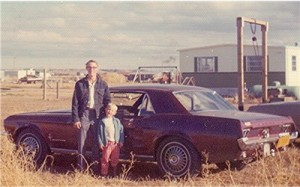 My brother-in-law, Ron Schulenberg has been my brother-in-law for so long that he is really more my brother that brother-in-law. Ron was just 6 years old when Bob and I started dating. We used to take him places with us when most people he knew made him feel like he was in the way. He was too little to do much in the way of chores, and he couldn’t really help his dad work on a car. Everybody just kept telling him to, “Go play.” That is a big bummer for a little guy who just wants to be a part of what he sees as “the fun.”
My brother-in-law, Ron Schulenberg has been my brother-in-law for so long that he is really more my brother that brother-in-law. Ron was just 6 years old when Bob and I started dating. We used to take him places with us when most people he knew made him feel like he was in the way. He was too little to do much in the way of chores, and he couldn’t really help his dad work on a car. Everybody just kept telling him to, “Go play.” That is a big bummer for a little guy who just wants to be a part of what he sees as “the fun.”
While Ron gets to “play” with the big kids these days, his idea of “fun”  hasn’t changed one bit. He still wants to play with the big toys. These days, as a mechanic, Ron can work on anything from a car to heavy equipment. He probably knows more about the equipment he works on that his dad ever did. His dad was an excellent mechanic too, but so much has changed over the years, and mechanics is no different. Computers have changed everything about how we work on things, In fact, some things won’t even tell us what is wrong without a computer. As these technological changes come into play, mechanics have to change with them. The problem for the older mechanics is that they are used to the old ways, or they have retired, and don’t have access to new technology. Then their own car needs work, and the don’t have the technology. Enter the younger guys.
hasn’t changed one bit. He still wants to play with the big toys. These days, as a mechanic, Ron can work on anything from a car to heavy equipment. He probably knows more about the equipment he works on that his dad ever did. His dad was an excellent mechanic too, but so much has changed over the years, and mechanics is no different. Computers have changed everything about how we work on things, In fact, some things won’t even tell us what is wrong without a computer. As these technological changes come into play, mechanics have to change with them. The problem for the older mechanics is that they are used to the old ways, or they have retired, and don’t have access to new technology. Then their own car needs work, and the don’t have the technology. Enter the younger guys.

Suddenly, it’s Ron who knows how to work on the new stuff. I suppose he could have told his dad and big brother to “go play,” but that wouldn’t be his style. Maybe because he knew how it felt, or more likely because he understands that there is a time to play with the big boys, and a time to wait your turn. For Ron I’m sure he knew that the time would come when he would be the one with the much needed knowledge. The other men would need to come to him for help. Yes, he could rub it in, but he didn’t. He is the go-to guy, and he is ready to help when he is asked. Today is Ron’s birthday. Happy birthday Ron!! Have a great day!! We love you!!
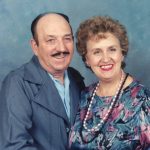
 Five years is such a long time, and yet such a short time. I simply can’t believe that my mom has been in Heaven that long. The day she left us is still vivid in my memory files. It is a picture I will never get out of my head. There are a few scenes in my head that are that way. I try not to focus on them. They don’t need to be re-run to keep their memory alive. I try to focus on the happier past…the memories of the good times with my mom.
Five years is such a long time, and yet such a short time. I simply can’t believe that my mom has been in Heaven that long. The day she left us is still vivid in my memory files. It is a picture I will never get out of my head. There are a few scenes in my head that are that way. I try not to focus on them. They don’t need to be re-run to keep their memory alive. I try to focus on the happier past…the memories of the good times with my mom.
Collene Spencer was a bit of a shy girl, but she knew a good looking man when she saw one. For her, falling in love with my dad was like breathing…and she never looked back. Mom didn’t really like school, so that was not something that had any hold on her. She wanted to be married and have a family. I don’t really know if that had been her dream, before she met my dad, but it certainly was after that meeting. Their honeymoon was a move East to Superior, Wisconsin where Dad’s family was from and still lived. Mom’s family liked the idea too, because it gave them someplace to go visit. It was a beautiful place to visit too, so that was a plus. While mom eventually wanted to and did move back, her family wished she had stayed, so they could justify more visits.
After having their first two daughters, Cheryl Masterson, and me in Superior, Mom and Dad had the rest, Caryl Reed, Alena Stevens, and Allyn Hadlock here in Casper, Wyoming, where Mom’s family mostly lives. I have always thought we were very blessed to have so much family around us. That has never really been made so clear as when we became orphans. That’s when family really means a lot. My sisters, and our families first and foremost, of course, but aunts, uncles, and especially cousins have stepped in too…making us feel loved and comforted. I will always miss my parents…until the day I join them in Heaven. They taught us so many things, 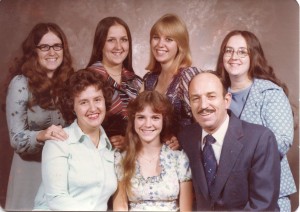
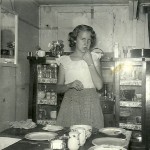 and it is because of their upbringing that we are the women we are today. The best we can do is make them proud of the people their children have become. I can’t believe that my mom has been in Heaven for five long years now. It seems an impossible number of years. While it seems just seconds ago to those who are there, mostly because that’s how eternity works, for the rest of us, the days feel much longer. We love and miss you Mom, and we can’t wait to see you again.
and it is because of their upbringing that we are the women we are today. The best we can do is make them proud of the people their children have become. I can’t believe that my mom has been in Heaven for five long years now. It seems an impossible number of years. While it seems just seconds ago to those who are there, mostly because that’s how eternity works, for the rest of us, the days feel much longer. We love and miss you Mom, and we can’t wait to see you again.
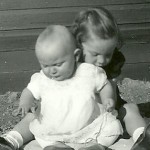
 My sister-in-law, Debbie Cook is my husband, Bob Schulenberg’s older sister. She was born just 16 months before my husband. Debbie’s birth followed a developmentally disabled older sister, and a miscarriage. Debbie’s own birth was not an easy situation either. She was born very, very premature, and only weighed a little over 2 pounds. When she finally came home from the hospital, she could have used a shoe box for a crib. Still, her life from that point forward, has been picture perfect.
My sister-in-law, Debbie Cook is my husband, Bob Schulenberg’s older sister. She was born just 16 months before my husband. Debbie’s birth followed a developmentally disabled older sister, and a miscarriage. Debbie’s own birth was not an easy situation either. She was born very, very premature, and only weighed a little over 2 pounds. When she finally came home from the hospital, she could have used a shoe box for a crib. Still, her life from that point forward, has been picture perfect.
With so much going wrong before and during her life’s beginning, one would expect that her whole life would have been much more tragic, and I suppose it could have been. These days great strides have been made in the area of preemie care. Often these babies started out behind, and stayed behind their whole lives. Now, the medical professionals understand that preemies have some special needs, care can be given to make preemie’s early days more productive. The thing about Debbie’s start is that she wasn’t born “these days.” Debbie was born back in the day when little was known of the needs of a preemie. That makes her prognosis more grave, and her outcome more miraculous. Debbie came out of her humble beginnings, without a “scratch” of a learning disability. I would have to call this one a miracle…plain and simple.
Debbie’s life has been one with relatively few health problems in it, and without learning disabilities, so considering the year of her beginning, things could have been much worse. Many babies born so prematurely 
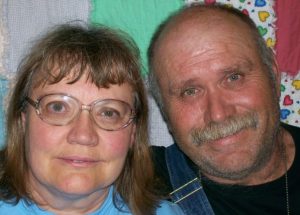 don’t survive…even these days. The outcome could have been very different…tragically different. Debbie’s life turned out good. It was not perfect. She lost a daughter of her own, but she had two healthy daughters, and 4 grandchildren. She and her husband, LJ are retired now, and love to go camping in the Big Horn Mountains as often as they can. I’m glad things in her life went the way they did, for the most part. Today is Debbie’s birthday. Happy birthday Debbie!! Have a great day!! We love you!!
don’t survive…even these days. The outcome could have been very different…tragically different. Debbie’s life turned out good. It was not perfect. She lost a daughter of her own, but she had two healthy daughters, and 4 grandchildren. She and her husband, LJ are retired now, and love to go camping in the Big Horn Mountains as often as they can. I’m glad things in her life went the way they did, for the most part. Today is Debbie’s birthday. Happy birthday Debbie!! Have a great day!! We love you!!
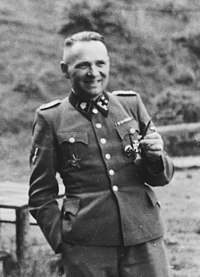 As a grandmother and great grandmother, I want my grandchildren to love me and want me around, but even more that that, I want my grandchildren to respect me, because when it comes down to it, your good name is really the best thing to pass down to your kids, whether they take your last name or not. Your name is your identity, oh sure, you can change it, but once you have ruined your reputation, not much can fix it.
As a grandmother and great grandmother, I want my grandchildren to love me and want me around, but even more that that, I want my grandchildren to respect me, because when it comes down to it, your good name is really the best thing to pass down to your kids, whether they take your last name or not. Your name is your identity, oh sure, you can change it, but once you have ruined your reputation, not much can fix it.
As a prime example, take the case of Rainer Höss. The name might not ring any bells to you, and mostly that would be due to the fact that the English pronunciation of the name, doesn’t really tell you what the name is. Rainer Höss is the grandson of the former commandant of Auschwitz, Rudolph Höss, and he knows first-hand how bad it can be when your name has been ruined.
In 1933, Rudolph Höss joined the SS in Nazi Germany, and in 1934 he was attached to the SS at Dachau. On August 1, 1938, Rudolph Höss was appointed as adjutant of the Sachsenhausen concentration camp until his appointment as Kommandant of the newly-built camp at Auschwitz in early 1940. In May 1941, SS commander Heinrich Himmler told Höss that Hitler had given orders for the final solution of the Jewish question and that “I have chosen the Auschwitz camp for this purpose.” It was then that Höss converted Auschwitz into an extermination camp and installed gas chambers and crematoria that were capable of killing 2,000 people every hour. He was brutally meticulous…counting corpses with the cool dedication of a trained bookkeeper, he went home each night to the loving embrace of his own family who lived on the camp grounds. Rudolph Höss had no qualms about watching millions of innocent human beings dissolve in the gas chambers, burn in the crematoriums and their teeth melt into gold bars, Höss even wrote poetry about the “beauty” of Auschwitz. He was a monster of epic proportions.
Nazi leader Adolf Eichmann recounted in his memoirs how he was assigned in early 1942 to visit the Auschwitz death camp and report back to superiors on the killing of Jews. He wrote that the methods for killing were still crude, but these represented a gruesome foretaste of the factory-style gas chambers and crematoria that were to follow: “Höss, the Kommandant, told me that he used sulfuric acid to kill. Round cotton wool filters were soaked with this poison and thrown into the rooms where the Jews were assembled. The poison was instantly fatal. He burned the corpses on an iron grill, in the open air. He led me to a shallow ditch where a large number of corpses had just been burned.”
Höss eventually found that gassing by carbon monoxide was inefficient and introduced the cyanide gas Zyklon B. He later recalled: “The gassing was carried out in the detention cells of Block 11. Protected by a gas mask, I watched the killing myself. In the crowded cells, death came instantaneously the moment the Zyklon B was thrown in. A short, almost smothered cry, and it was all over…I must even admit that this gassing set my mind at rest, for the mass extermination of the Jews was to start soon, and at that time neither Eichmann nor I was certain as to how these mass killings were to be carried out. It would be by gas, but we did not know which gas and how it was to be used. Now we had the gas, and we had established a procedure.” Rudolph Höss not only “enjoyed” his work, but he was proud of his accomplishments.
His family, or at least his grandson Ranier Höss was horrified by the legacy his grandfather so “lovingly” left him. He could not believe that his grandfather was not only proud of what he had done, but he liked it so much that he wanted to watch from inside the chamber. Rainer Höss has spent his whole life trying to escape the stigma of being related to Rudolph Höss. Rainer doesn’t expect to be forgiven…he knows that he will always be blamed for what his grandfather did, because his grandfather left him the name. His grandfather was proud his “accomplishments.” He honestly thought everyone would be proud. He honestly thought he was a hero.
Rainer Höss doesn’t expect to be “forgiven.” He knows it wasn’t his fault, but he understands the reasons people react the way they do, because it’s how he would react. That is the real legacy his “grandfather” left him. You see, for Rainer Höss…grandfather is an abstract word.
 In 1980, the United States started a national clean-up program called Adopt-A-Highway. I’m sure we have all seen the signs along the highway, although these days we are so used to them, that it’s easy to miss them, if we aren’t paying attention. Littering was a big problem when I was growing up. I recall everyone tossing trash out the window, while driving down the highway. Then a man, by the name of James Evans, an engineer for the Texas Department of Transportation (TxDOT), saw debris flying out of a pickup truck bed. Litter cleanup by the city was expensive, so Evans sought the help of local groups to sponsor the cleaning of sections of the highway. In addition, the efforts of Billy Black, a TxDOT public information officer, led to quarterly cleanup cycles, volunteer safety training, the issuing of reflective vests and equipment, and the posting of adopt-a-highway signs.
In 1980, the United States started a national clean-up program called Adopt-A-Highway. I’m sure we have all seen the signs along the highway, although these days we are so used to them, that it’s easy to miss them, if we aren’t paying attention. Littering was a big problem when I was growing up. I recall everyone tossing trash out the window, while driving down the highway. Then a man, by the name of James Evans, an engineer for the Texas Department of Transportation (TxDOT), saw debris flying out of a pickup truck bed. Litter cleanup by the city was expensive, so Evans sought the help of local groups to sponsor the cleaning of sections of the highway. In addition, the efforts of Billy Black, a TxDOT public information officer, led to quarterly cleanup cycles, volunteer safety training, the issuing of reflective vests and equipment, and the posting of adopt-a-highway signs.
Like any new idea, the Adopt-A-Highway program took a while to kick off. but in 1985, the Tyler Civitan Club became the first group to volunteer, adopting by two miles along US Route 69 just north of Loop 323 between Tyler and Interstate 20. It was the kick start the program needed. The program proved to be very successful and has since spread to 49 states, Puerto Rico, Canada, New Zealand, Australia, and Japan. Vermont has a similar program called “Green Up.”
Some states, such as Nevada, allow both Adopt-a-Highway and Sponsor-a-Highway programs. In both programs, an organization that contributes to the cleanup is allowed to post its name. That is where the similarity ends, however. While an adopting organization provides the volunteers who do the litter pickup, a sponsoring organization instead pays professional contractors to do the work. Safety concerns, make the latter more typical in highways with high traffic volumes.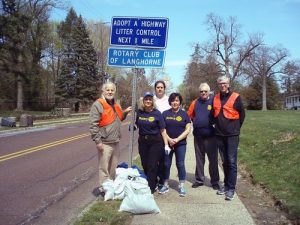
There have been some controversies, such as when the KKK wanted to join. People were against it and some anger was stirred up. The Adopt-A-Highway program allows any organization to participate, which became a point of controversy when the Ku Klux Klan adopted a portion of Interstate 55 just south of St. Louis, Missouri. While legally the program had to uphold the groups’ rights to participate, public outcry and repeated destruction of its sign was a cause of concern. In November 2000, the section of highway was designated as the Rosa Parks Freeway after the famous civil rights figure. It was then that the problem began to work itself out. The KKK sponsorship was later dropped from the program for the group’s failure to fulfill its obligations, and the Missouri Department of Transportation adopted specific criteria to prohibit hate groups from future participation. However, the 8th Circuit Court of Appeals ruled that any attempt to bar the Klan from participation in the Adopt-a-Highway program on the basis of the group’s purpose is a violation of the First Amendment. The Supreme Court declined to hear the case, so the ruling stood.
In January 2005, the American Nazi Party adopted a stretch of the rural Sunnyview Road NE outside Salem, Oregon. Two signs were put up along the road that bore the names of the American Nazi Party and NSM. The signs, which cost $500 and were almost immediately subject to vandalism, have since been removed. The American Nazi Party’s chair, Rocky J. Suhayda, claimed to have no association with the Adopt a Highway program. In 2009, the state of Missouri renamed a section of highway after Rabbi Abraham Joshua Heschel, because it had been adopted by a neo-Nazi group. Rabbi Heschel fled the Nazis’ advance in Europe and became a  prominent theologian and civil rights advocate in the United States before his death in 1972. Rabbi Heschel’s daughter opposed this decision.
prominent theologian and civil rights advocate in the United States before his death in 1972. Rabbi Heschel’s daughter opposed this decision.
To me it seems that caring for the earth, and hate groups just don’t go together. I don’t understand why a law can’t be made, to stop hate groups from participation in this or anything else that is service oriented. I think that any group that joins to exploit the sensational aspect of things should be able to be banned, but that is my opinion. Economically, the program may be viewed as a way of getting around regulations prohibiting billboards next to a highway and on a per-view basis. Still, it is more economical than billboards.
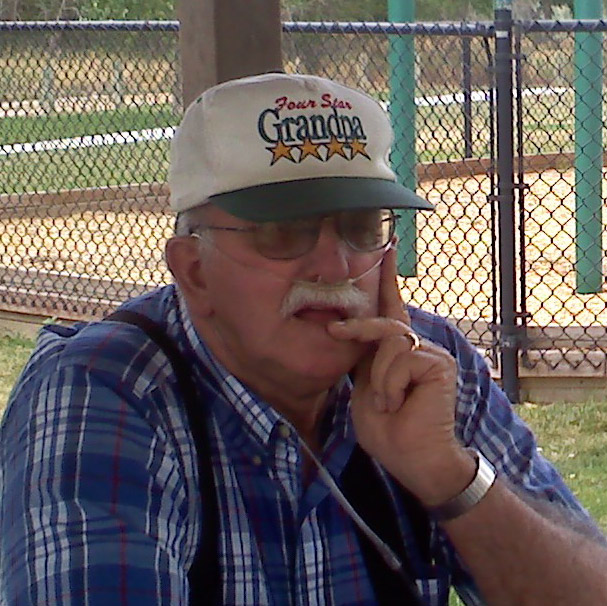 My Uncle Jack McDaniels was such a fun man. He was a jokester at heart, and he loved spending time with his family. On of the things he was very interested in was history. He loved to share that with his kids and even had a number of history books that reflected the stories he shared. I wish many of us had known about his knowledge of Casper history.
My Uncle Jack McDaniels was such a fun man. He was a jokester at heart, and he loved spending time with his family. On of the things he was very interested in was history. He loved to share that with his kids and even had a number of history books that reflected the stories he shared. I wish many of us had known about his knowledge of Casper history.
Uncle Jack and Aunt Bonnie had a beautiful place east of Casper, along the Platte River. There they raised their kids, Cindy and Michael. Uncle Jack loved tp teach Michael about cars and car racing. The two of them spent many hours tinkering on cars in the garage. It’s a great pastime for a father and son.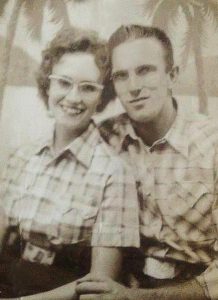
Uncle Jack loved the outdoors, and all outdoor sports. He loved to go hunting and fishing, as well as taking his family camping. That seemed to be a common thing among the men in our family. I’m sure that is why Uncle Jack fit in so well in our family. All of the aunts and uncles loved Uncle Jack. I can see why, because all of his nieces and nephews loved him too. He was sweet and funny, with a great sense of humor. My husband, Bob and I usually ran into Aunt Bonnie and Uncle Jack at the normal weekly hangout…Walmart. That seems to be the place we see most of our friends and family. I guess that’s what happens when you grow up and start adulting. A “date” is the weekly trip to the grocery store. I miss those times. I always looked forward to them. Today would have been my Uncle Jack’s 82nd birthday. Happy birthday in Heaven Uncle Jack. We love and miss you very much.
 As another child turns 16, so another child is behind the wheel. My grand-nephew, Easton Moore has reached that milestone year of his life. Easton is the younger of my niece, Machelle Moore and her husband, Steve. It’s hard for me to believe that Easton is 16 years old already. It seems like just yesterday that he was born. That is the way most parents feel about the time their child turns 16. Easton will be getting his license soon. They have to have 50/hours of day and 10/hours of night driving to do before they can get their license. He is almost there. Something new has helped Easton, that his brother, Weston didn’t have the use a driving app. They didn’t have that when Weston was learning. This years lack of snow has hampered Easton’s snow driving experience, but the past two weeks has made up for the winter’s lack of snow,
As another child turns 16, so another child is behind the wheel. My grand-nephew, Easton Moore has reached that milestone year of his life. Easton is the younger of my niece, Machelle Moore and her husband, Steve. It’s hard for me to believe that Easton is 16 years old already. It seems like just yesterday that he was born. That is the way most parents feel about the time their child turns 16. Easton will be getting his license soon. They have to have 50/hours of day and 10/hours of night driving to do before they can get their license. He is almost there. Something new has helped Easton, that his brother, Weston didn’t have the use a driving app. They didn’t have that when Weston was learning. This years lack of snow has hampered Easton’s snow driving experience, but the past two weeks has made up for the winter’s lack of snow,  so Easton is catching up fast. Machelle tells me that Easton is really improving with practice. Strangely, Powell, Wyoming, where Easton lives has just now started plowing the streets. Shocking for Wyoming.
so Easton is catching up fast. Machelle tells me that Easton is really improving with practice. Strangely, Powell, Wyoming, where Easton lives has just now started plowing the streets. Shocking for Wyoming.
Easton signed up for a welding course at the college that he is super excited about. The Boces program, which stands for the Board of Cooperative Educational Services. Has made many college classes available to high school students. It’s a great way to give these kids a chance to get ahead in their college education, and to make sure that the course of study is the career  move they want to make. Easton is still is not sure what he wants to do after high school, but taking that class might open some doors for him.
move they want to make. Easton is still is not sure what he wants to do after high school, but taking that class might open some doors for him.
Easton is actively looking for a job, so he can save for a car. He has a stack of applications to fill out and hand back in. Easton is motivated to help whenever anyone needs help. He just jumps up and just does it!! That says a lot about his character. Today is Easton’s 16th birthday. Pretty soon we will all need to get off the sidewalks, as a new driver hits the road. Happy birthday Easton!! Have a great day!! We love you!!
 I read a book the other day, called “The Librarian of Auschwitz.” It is a true story about a woman named Dita Polachova , who at the age of 14 years was imprisoned at Auschwitz. I was moved by the sacrifices the people in her network made, as well as the many people I have read about in the past. We, in America, don’t often understand the need to sacrifice our own safety, and many people wouldn’t do it even if it was necessary. Dita was one of those people who would.
I read a book the other day, called “The Librarian of Auschwitz.” It is a true story about a woman named Dita Polachova , who at the age of 14 years was imprisoned at Auschwitz. I was moved by the sacrifices the people in her network made, as well as the many people I have read about in the past. We, in America, don’t often understand the need to sacrifice our own safety, and many people wouldn’t do it even if it was necessary. Dita was one of those people who would.
She was in charge of eight books that someone had smuggled into Auschwitz, the first sacrifice. It was something that could have cost the smuggler his life, but he saw value in the ability to get the books into the hands of the family camp, and the children’s school at Auschwitz. The family camp, and the coordinated children’s school was unique to Auschwitz. Most camps did not allow families to stay together. In fact, most of the children were killed upon arrival at the camps. The family camp and the children’s school were the 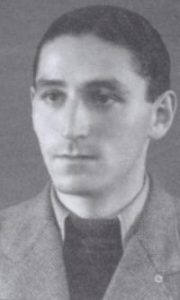 brainstorm sacrifice Freddy Hirsch, who was a Jewish athlete, one of the great runners. He was almost impossible to beat. I don’t know if that was what gave him some pull or not, but he made a sacrifice that turned out to be the ultimate sacrifice. Fredy Hirsch would not survive Auschwitz. It wasn’t because the books were found, but rather that the Nazis were taking away the family camp and children’s school. He took his own life. He assumed that the precious books would be lost, but he had underestimated Dita, who managed to get the books back in their hiding place, where they were not found by the Nazis.
brainstorm sacrifice Freddy Hirsch, who was a Jewish athlete, one of the great runners. He was almost impossible to beat. I don’t know if that was what gave him some pull or not, but he made a sacrifice that turned out to be the ultimate sacrifice. Fredy Hirsch would not survive Auschwitz. It wasn’t because the books were found, but rather that the Nazis were taking away the family camp and children’s school. He took his own life. He assumed that the precious books would be lost, but he had underestimated Dita, who managed to get the books back in their hiding place, where they were not found by the Nazis.
Dita outlived the Nazi reign of terror and went on to lead a happy life, despite the memories that would haunt her for the rest of her life. She married Arvid Harnack, an author, who with the writer Adam Kuckhoff and his wife Greta, who with Mildred Fish-Harnack brought together a discussion circle which debated political perspectives on the time after the National Socialists’ expected downfall or overthrow. From these meetings arose what the Gestapo called the Red Orchestra resistance group.
The Red Orchestra, Die Rote Kapelle in German, or the Red Chapel as it was known in Germany, was the name given by the Gestapo to anti-Nazi resistance workers during World War II. The members included friends of Harro Schulze-Boysen and Arvid Harnack in Berlin, as well as groups working independently of these intelligence groups, working in Paris and Brussels, that were built up on behalf of Leopold Trepper on behalf of the Soviet Main Directorate of State Security. The Red Orchestra was neither 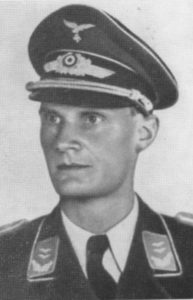 directed by Soviet communists nor under a single leadership but a network of groups and individuals, often operating independently contrary to legend. About 400 members are known by name at this time. They printed illegal leaflets hoping to incite civil disobedience, helped Jews and opposition escape the regime, documented the crimes of the Nazi regime, and forwarded military intelligence to the Allies. The public perception of the “Red Orchestra” is characterized by the transfigurations of the post-war years and the Cold War.
directed by Soviet communists nor under a single leadership but a network of groups and individuals, often operating independently contrary to legend. About 400 members are known by name at this time. They printed illegal leaflets hoping to incite civil disobedience, helped Jews and opposition escape the regime, documented the crimes of the Nazi regime, and forwarded military intelligence to the Allies. The public perception of the “Red Orchestra” is characterized by the transfigurations of the post-war years and the Cold War.
The network of people willing to risk their own lives during the Holocaust years was extensive. From Jews who risked their lives to make life better in and out of the camps, to non-Jews who risked their lives to fight against the atrocities of the Nazi Regime and the Third Reich. These were brave people who knew that bravery isn’t about being fearless, but rather being brave despite the fear. Their stories deserve to be told. They deserve recognition, because in the face of the worst odds, they took action anyway. That is true bravery, and true sacrifice.
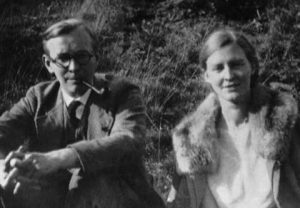 Mildred Fish was an American-German literary historian, translator, and later, a German Resistance fighter in Nazi Germany. They fell in love and married, moving to Germany right after. She met her future husband, Arvid Harnack in 1926. Arvid was a grad student at the University of Wisconsin-Milwaukee, and a Rockefeller Fellow from Germany. In Germany, Mildred worked in education and Arvid secured a position with the Reich Economic Ministry. Throughout the 1930s, Mildred and Arvid, became increasingly alarmed by Hitler’s rise to power. They could see that he had ulterior
Mildred Fish was an American-German literary historian, translator, and later, a German Resistance fighter in Nazi Germany. They fell in love and married, moving to Germany right after. She met her future husband, Arvid Harnack in 1926. Arvid was a grad student at the University of Wisconsin-Milwaukee, and a Rockefeller Fellow from Germany. In Germany, Mildred worked in education and Arvid secured a position with the Reich Economic Ministry. Throughout the 1930s, Mildred and Arvid, became increasingly alarmed by Hitler’s rise to power. They could see that he had ulterior 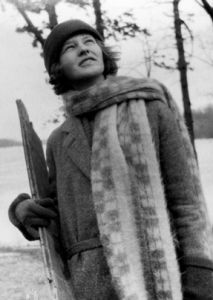 motives. They communicated with a close circle of associates who believed communism and the Soviet Union might be the only possible stumbling block to complete Nazi tyranny in Europe.
motives. They communicated with a close circle of associates who believed communism and the Soviet Union might be the only possible stumbling block to complete Nazi tyranny in Europe.
When Mildred came to the United States for a lecture tour in 1937, her family begged her to relocate permanently, but she refused and resumed her life in Germany. I suppose she thought she could be of better assistance there than in the United States. When war was declared in 1941, she did not leave with other Americans. 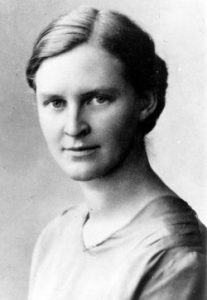 They couldn’t leave, because by then, Mildred and Arvid were involved with a communist espionage network known by the Gestapo as “The Red Orchestra”. The ring, which provided important intelligence to the USSR, was compromised and the members were arrested. I’m sure they knew this was a death sentence for them.
They couldn’t leave, because by then, Mildred and Arvid were involved with a communist espionage network known by the Gestapo as “The Red Orchestra”. The ring, which provided important intelligence to the USSR, was compromised and the members were arrested. I’m sure they knew this was a death sentence for them.
After they were tried as traitors, Arvid was sentenced to death and executed on December 22, 1942. Mildred was given a six year sentence, but Hitler refused to endorse her punishment. As only a dictator can, he insisted on a retrial, after which she was condemned on January 16, 1943. She was beheaded by guillotine at Plotzensee Prison on February 16, 1943. She was the only American female executed on the orders of Adolf Hitler. Because of her connection to possible communist sympathies and post-war McCarthyism, her story is virtually unknown in the United States.
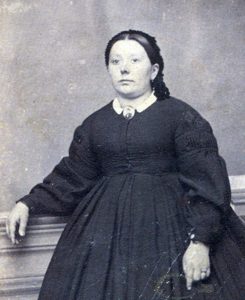
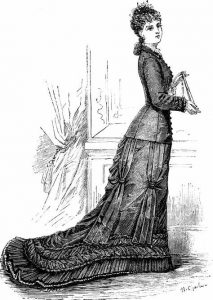 Every year, as the new year approaches, we take a look at our life and try to think of how we could improve ourselves. Many of us decide that it is time to start a new diet. Every year some new diet shows up. Some people will find something that works for them in the long term, but the reality is that just as often, the new diet doesn’t work, and they set out in search of the next new thing. The reality is that no one diet works for everyone, and dieters sometimes have to try several to see what works for them. It is a fact that has irritated every one of us for years.
Every year, as the new year approaches, we take a look at our life and try to think of how we could improve ourselves. Many of us decide that it is time to start a new diet. Every year some new diet shows up. Some people will find something that works for them in the long term, but the reality is that just as often, the new diet doesn’t work, and they set out in search of the next new thing. The reality is that no one diet works for everyone, and dieters sometimes have to try several to see what works for them. It is a fact that has irritated every one of us for years.
Most people on a diet know that one of the first things to go is the sugar, join a gym, and stubbornly stick to our plan. What we don’t realize is that diets are not a new 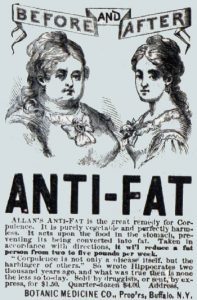 thing. As early as the 18th century, diet doctors began to recommend strict, low fat meals, and newspapers featured adverts for tonic and diet pills. Who would have thought. The idea of beauty changes, and it had changed to a much more slender look.
thing. As early as the 18th century, diet doctors began to recommend strict, low fat meals, and newspapers featured adverts for tonic and diet pills. Who would have thought. The idea of beauty changes, and it had changed to a much more slender look.
Suddenly, attitudes towards over-indulgence, obesity, and body shape were hotly debated, and there developed a pressure to demonstrate self-restraint. Of course, the debates were also about what was a healthy way to eat, and what wasn’t. That debate continues to this day. At one point, a doctor lost weight by cutting fat, and the low-fat craze began. Many people would say that low-fat should not be a craze, but a standard. I won’t “weigh” in on that debate, because we all have our own ideas. Since that time, we have all tried a multitude of diets in an attempt to reach our perfect selves. We can say that some of the new body images would be healthier, and we would be right. Too skinny isn’t healthy, nor is too fat. The argument on that will continue, just as it started in the 18th century…a debate in progress.

